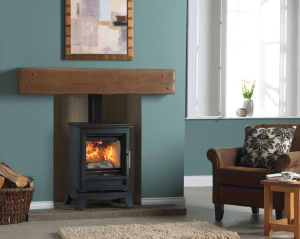 New builds and the ancient art of burning wood. Not really two things you would place together. However, the burning of wood in high efficiency wood burning stoves, can help new builds comply with Document L of the Building Regulations, while at the same time satisfying SAP calculations.
New builds and the ancient art of burning wood. Not really two things you would place together. However, the burning of wood in high efficiency wood burning stoves, can help new builds comply with Document L of the Building Regulations, while at the same time satisfying SAP calculations.
What is Document L?
Document L is a number of approved documents that give a general guide on how varying elements of building design and construction can comply with the Building Regulations.
What is SAP?
SAP stands for Standard Assessment Procedure. It is the governments recommended system for measuring the energy efficiency of a residential dwellings. It calculates the typical annual energy costs for space and water heating, and, since 2005, lighting too. The CO2emissions are also calculated in SAP.
SAP indicates a score from 1 to 100+ for annual energy cost, based on:
1. The internal lighting
2. The elements of the structure
3. The heating and hot water system
4. The renewable technologies used
The higher the SAP score, the lower the running costs.
How Wood Burning Stoves Help:
According to Document L of the Building Regulations, each new build property needs to feature a form of secondary heating. The purpose of this is to ensure homes reduce their CO2 emissions year-on-year. Something like electricity can have a negative effect on a homes SAP rating, if its used as a secondary heating source. Where things like burning wood, on a high efficiency stove can have a positive effect on a homes SAP rating, as its a renewable energy source. Most electricity is a result of burning fossil fuels.
With recent changes to Document L, wood has increased it’s role in heating a home too. A stove can now be used as a primary heating source, where previously it could only contribute a maximum of 10% to the heating of a property, so long as a stove can heat more than one room.
A key element to a highly efficient stove is ensuring it’s flue is up to the job – that it efficiently controls the air leaving the building. This is a particular concern in highly airtight new build homes, where there is much less opportunity for a fire to draw air from a room, which can impact on it’s overall performance, and govern the exiting air flow of hot gases in the flue.
Differing Flues:
There are a wide range of flues available in a range of materials. A flue can play a key part in the efficiency of a stove. Below are a range of different flue options:
Clay – Best suited to dry non-condensation conditions.
Ceramic – Ideal for wood, oil and gas fires.
Pumice – Made from volcanic rock. Ideal for a stove installation. Good heat retaining qualities.
Masonry – Ideal for open fires, wood or multi-fuel stoves. Most often used with new builds.
Stainless Steel – Ideal for properties, which do not have a chimney. Stainless Steel can also be used in a chimney as a liner.
View our range of high efficiency wood burning stoves:
Gallery
Stove Info
Locate a Showroom








